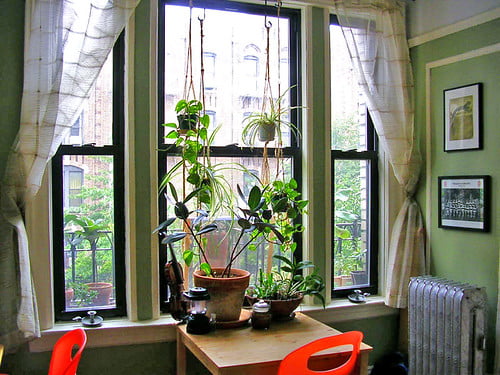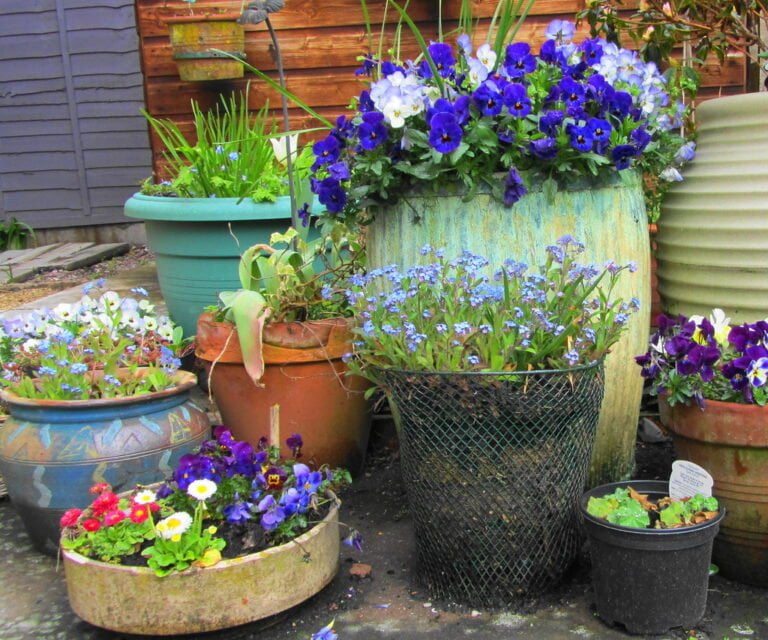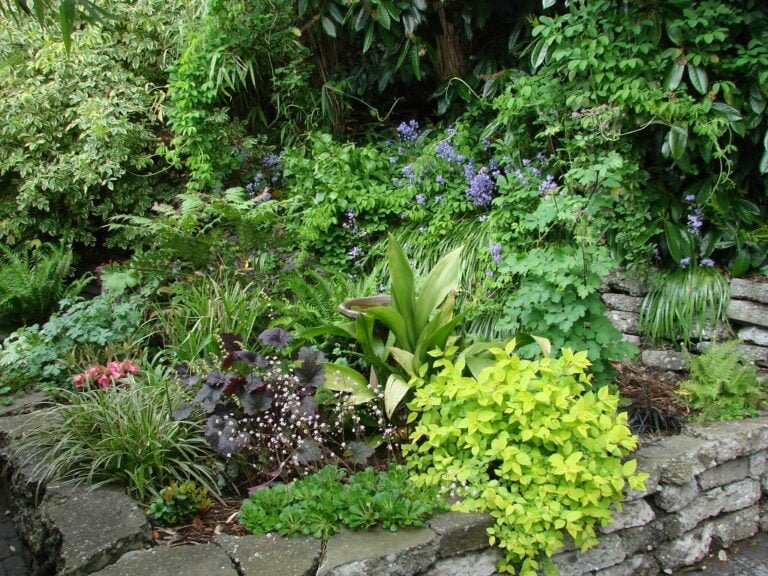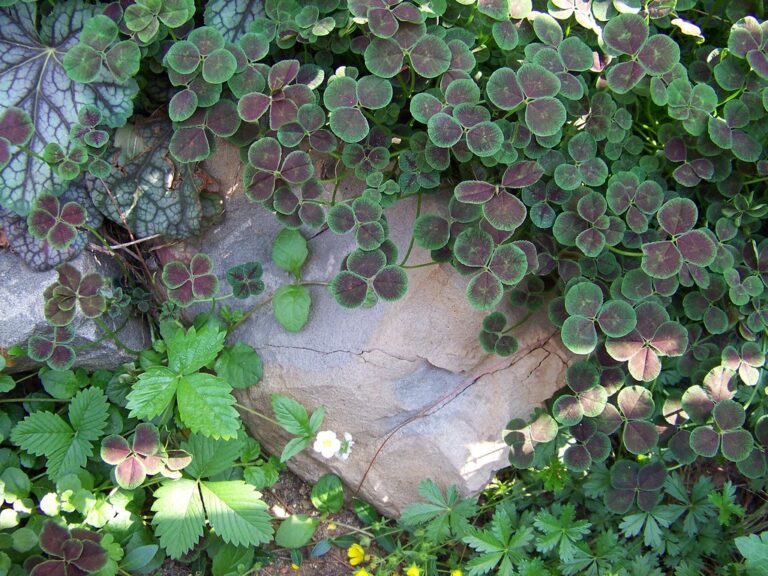Seasonal Care Guide for Shade Plants: Spring, Summer, and Fall Maintenance Tips
Caring for shade plants changes each season. In spring, divide and transplant, clear debris, and check for pests. Come summer, water well, mulch, prune, and provide shade. Fall means trim, divide, mulch, and protect from the cold. Maintain moisture levels, inspect for pests, prune for air circulation, mulch for moisture, and know your plants’ shade needs year-round. The optimal care guarantees healthy growth.
Spring Maintenance Tips for Shade Plants
Spring is the ideal season to guarantee the health and vitality of your shade plants through focused maintenance practices. It is essential to start by dividing and transplanting shade plants in the spring to ensure peak growth. This process helps rejuvenate overcrowded plants and allows them to thrive in their new spaces. Clearing debris and dead leaves from the garden beds is vital to promote air circulation and prevent diseases that can harm shade plants. By tidying up the area, you create a healthier environment for your plants to flourish.
In addition to cleaning up, applying a balanced fertilizer in the spring is key to providing shade plants with the necessary nutrients for healthy development. This step supports robust growth and vibrant foliage throughout the season. Regularly checking for pests and diseases on your shade plants is essential in the spring. Early detection and prompt treatment can prevent these issues from spreading and causing significant damage to your plants.
Furthermore, consider introducing new shade-tolerant varieties to enhance the diversity and beauty of your shaded areas. Spring is the perfect time to plant these varieties, allowing them to establish themselves before the heat of the summer sets in. By following these maintenance tips in the spring, you can ensure that your shade plants remain healthy and thriving throughout the season.
Summer Care Guide for Shade Plants
As the weather warms up, my focus shifts to ensuring shade plants receive the necessary care to thrive during the summer months. Summer care for shade plants is essential for their health and vitality. Adequate watering is vital to combat heat stress and maintain healthy growth. Mulching around shade plants helps conserve moisture, regulate soil temperature, and suppress weeds during the hot season. Pruning shade plants in summer involves removing dead or damaged branches to improve air circulation and promote new growth.
To protect shade plants from intense sunlight and prevent leaf scorching, providing shade or using shade cloth is recommended. Fertilizing shade plants with a balanced formula during the summer ensures they receive essential nutrients for robust development. Proper care during the summer months not only helps shade plants survive the heat but also thrive.
Remember to monitor the soil moisture levels regularly, especially during dry spells, and adjust your watering schedule accordingly. Ensure good air circulation around the plants to prevent diseases. By following these summer care tips for shade plants, you can enjoy a lush and healthy garden even during the hottest months of the year.
Fall Maintenance Tips for Shade Plants
For best autumn maintenance of shade plants, prioritize trimming to eliminate dead or diseased branches and promote vigorous growth. Pruning not only aids in maintaining the overall health of shade plants but also stimulates new growth. It is crucial to carefully examine each plant, cutting back any damaged or infected areas to prevent the spread of disease. This process also allows for improved air circulation within the plant, reducing the risk of fungal issues.
In addition to trimming, consider dividing overgrown shade plants to revitalize them and create more room for ideal growth. This practice can help guarantee that each plant receives sufficient nutrients and prevents overcrowding, resulting in healthier and more vibrant foliage.
As the temperatures start to decrease, apply a layer of mulch around shade plants to retain moisture and insulate roots during winter. Mulch acts as a protective shield, guarding the plants from extreme temperature changes and decreasing the chances of frost damage.
To provide extra winter protection, cover shade plants with blankets or burlap on cold nights to shield them from frost. This simple precaution can make a significant difference in the plant’s survival during severe weather conditions.
For added color and interest in the garden, consider planting spring-flowering bulbs around shade plants. This not only boosts the visual appeal of the garden but also adds variety to the plant bed, creating a dynamic and inviting outdoor space.
Seasonal Care Checklist for Shade Plants
To guarantee top health and growth of your shade plants all year round, it is essential to follow a thorough seasonal care checklist. Starting in spring, make sure your shade plants receive regular watering and prune them to promote healthy growth by removing any damaged or diseased parts. This step sets the foundation for a successful growing season. As summer approaches, provide adequate mulching around your shade plants to retain moisture and shield their roots from heat stress. Mulching also helps to suppress weeds that could compete with your plants for nutrients.
Transitioning into fall, include maintenance tasks such as cleaning up debris, preparing your plants for winter, and ensuring they are properly insulated. Fall is a critical time to fortify your shade plants against the colder months ahead. Throughout all seasons, monitor your shade plants for pests and diseases. Being proactive in identifying and addressing any issues promptly is key to maintaining the overall health of your shaded garden.
Year-round Maintenance for Shade Plants
Maintaining shade plants year-round requires consistent attention to moisture levels, protection from harsh afternoon sun, and regular inspection for pests and diseases. Shade plants, being adapted to low light conditions, are more susceptible to issues when not cared for properly. To guarantee their health, it’s essential to prune shade plants to improve air circulation and prevent overcrowding, especially in dense shade areas where sunlight penetration is limited. Mulching around shade plants is indispensable as it helps retain moisture, regulate soil temperature, and suppress weed growth, creating a conducive environment for their growth.
Regularly inspecting shade plants for pests and diseases is crucial since they can be more vulnerable in shady spots. Keep an eye out for common shade plant pests like spider mites and aphids, as well as diseases that thrive in damp, dark conditions. Understanding the shade tolerance of each plant species in your garden is necessary for proper maintenance. Some shade plants can tolerate deep shade, while others prefer dappled light. By knowing the specific requirements of your plants, you can ensure they receive the right amount of light throughout the year. Monitoring soil moisture levels, providing adequate shade, and addressing any issues promptly will help your shade plants thrive year-round.






